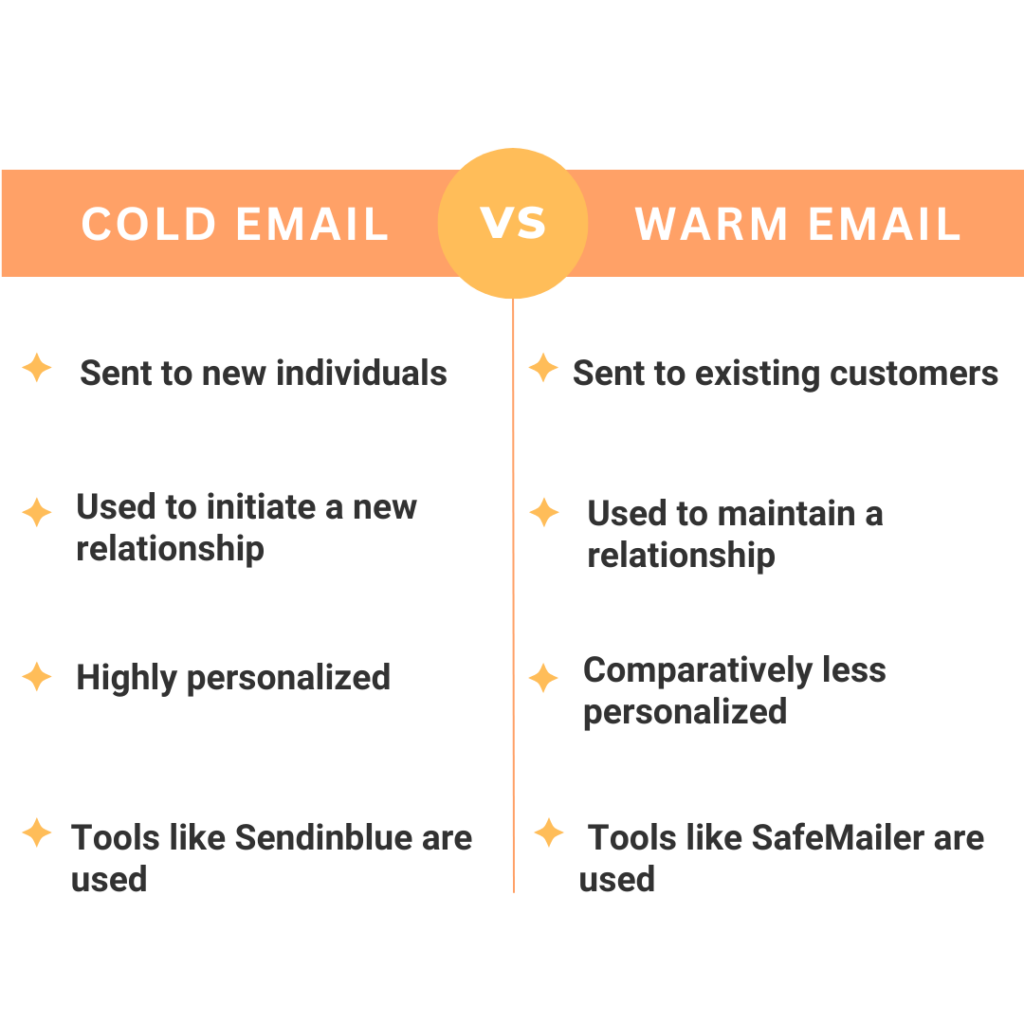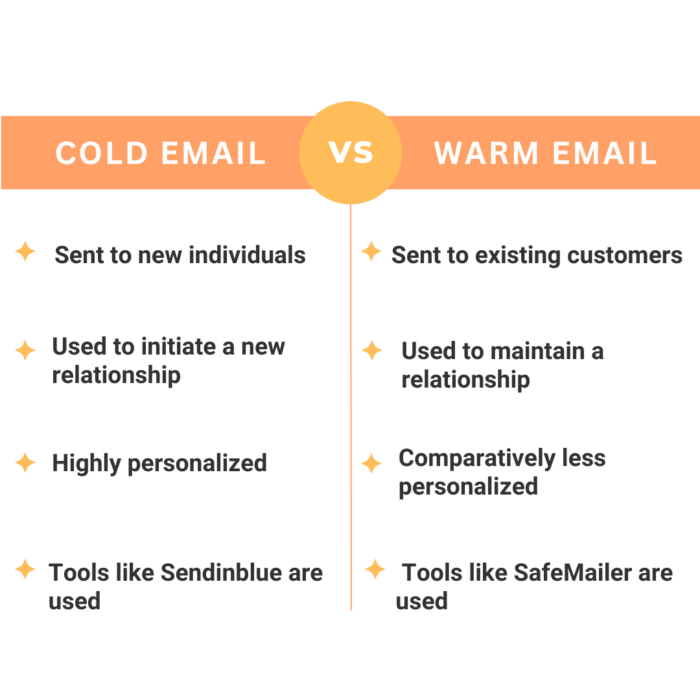Cold and warm emailing are the most widely used forms of email marketing. Both can tremendously benefit your business if utilized in the right manner.
Cold emailing can help you expand your reach to potential customers, whereas, warm emailing can help you strengthen your bond with your present customers.
However, both these approaches involve different strategies, techniques, and tools. Hence, it is important to know the nature of each emailing technique and understand their difference to run a successful campaign.
This guide will help you with it. So, let’s dive in.
Cold Email Vs Warm Email: Definitions
What is a cold email?
Cold emails are typically the ones sent to individuals who have not opted-in or subscribed to receive emails from the sender.
You can use cold emailing to generate leads usually to introduce yourself and your business, or make a sales pitch.
However, cold emailing can be seen as intrusive or spammy if not done correctly.
To increase the chances of success, make sure that your cold emails are:
- Personalized
- Relevant
- Provide clear value to the recipient
What is a warm email?
Unlike cold emailing, here you send emails to people who already know you and have allowed you to email them from your end.
Warm emailing is a great way to build relationships and communicate effectively in a professional context. It can greatly help you to strengthen the relationship with your present customers.
Cold Email Vs Warm Email:

1. Purpose of cold emailing vs warm emailing:
Cold emailing and warm emailing both have different goals.
A cold email is typically used to initiate a new relationship or to introduce a new product or service.
On the other hand, a warm email is used to maintain a relationship, follow up on a previous conversation or interaction, or request a favor.
2. Personalization:
As a cold email is an unsolicited email, it needs to be highly personalized to catch the recipient’s attention.
While a warm email can refer to a previous interaction or conversation to establish a connection.
3. Tools used:
As the nature of both emails is different, the tools you use for cold emailing and warm emailing should also be different.
Tools like Sendinblue can help you run a warm email marketing campaign successfully. But is not suitable for cold email campaigns.
If you want to automate your cold email campaigns, a cold email automation tool like SafeMailer can help you efficiently.
4. Email content
Warm email marketing messages can be triggered by user behavior.
For instance, when a user leaves a product in a cart without completing a purchase, you can send a reminder email to the user and encourage them to complete the purchase.
In contrast, cold emails are less predictable. They are more dependent on a direct response from the recipient, rather than following a pre-set sequence.
5. Measuring metrics
When it comes to cold emails, the primary goal is to receive a response from the recipient, as this is what initiates a conversation.
As a result, measuring reply rates is crucial when assessing the effectiveness of a cold email campaign.
On the other hand, in warm email marketing, the objective is to encourage prospects to click on links to designated pages.
In this context, reply rates are less relevant, and it is more appropriate to track the number of clicks or actions taken by the user. Measuring clicks would be irrelevant for cold emailing, where the main objective is to initiate a conversation.
6. Call-to-action:
A cold email should have a clear call to action that encourages the recipient to take a specific action, while a warm email can be more subtle and may not require a specific action from the recipient.
Conclusion:
It’s crucial to differentiate between cold emailing and warm emailing.
Cold emailing involves reaching out to potential customers directly, while warm emailing completely focuses on attracting interested customers to your brand.
Although the end goal of both approaches is to make a sale, they require different tools, content, frequency, and skills.
Regardless of which method you prefer, both have a role to play in your sales and marketing strategy. So, as you now know their nature, build your strategy accordingly.


Leave a Reply